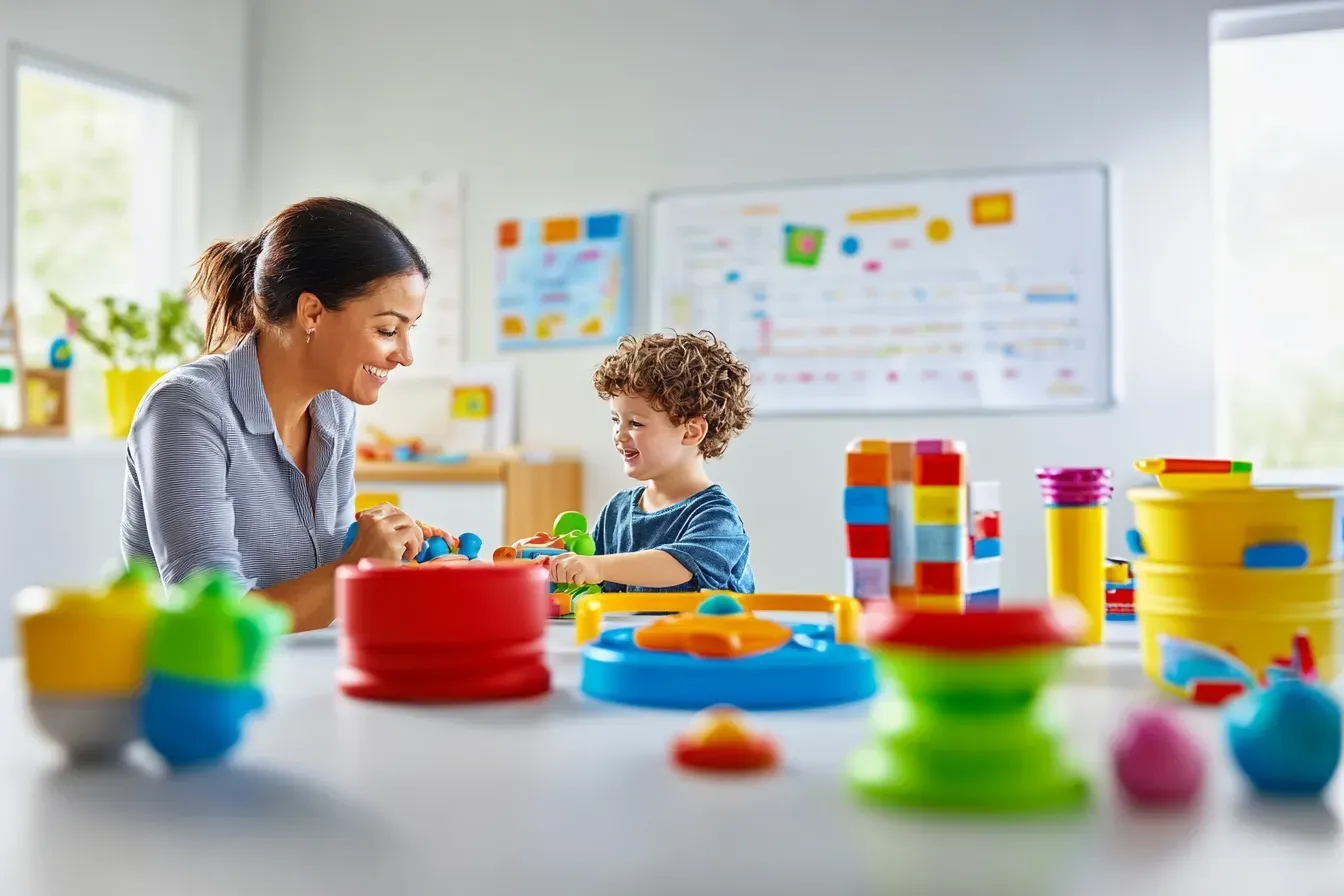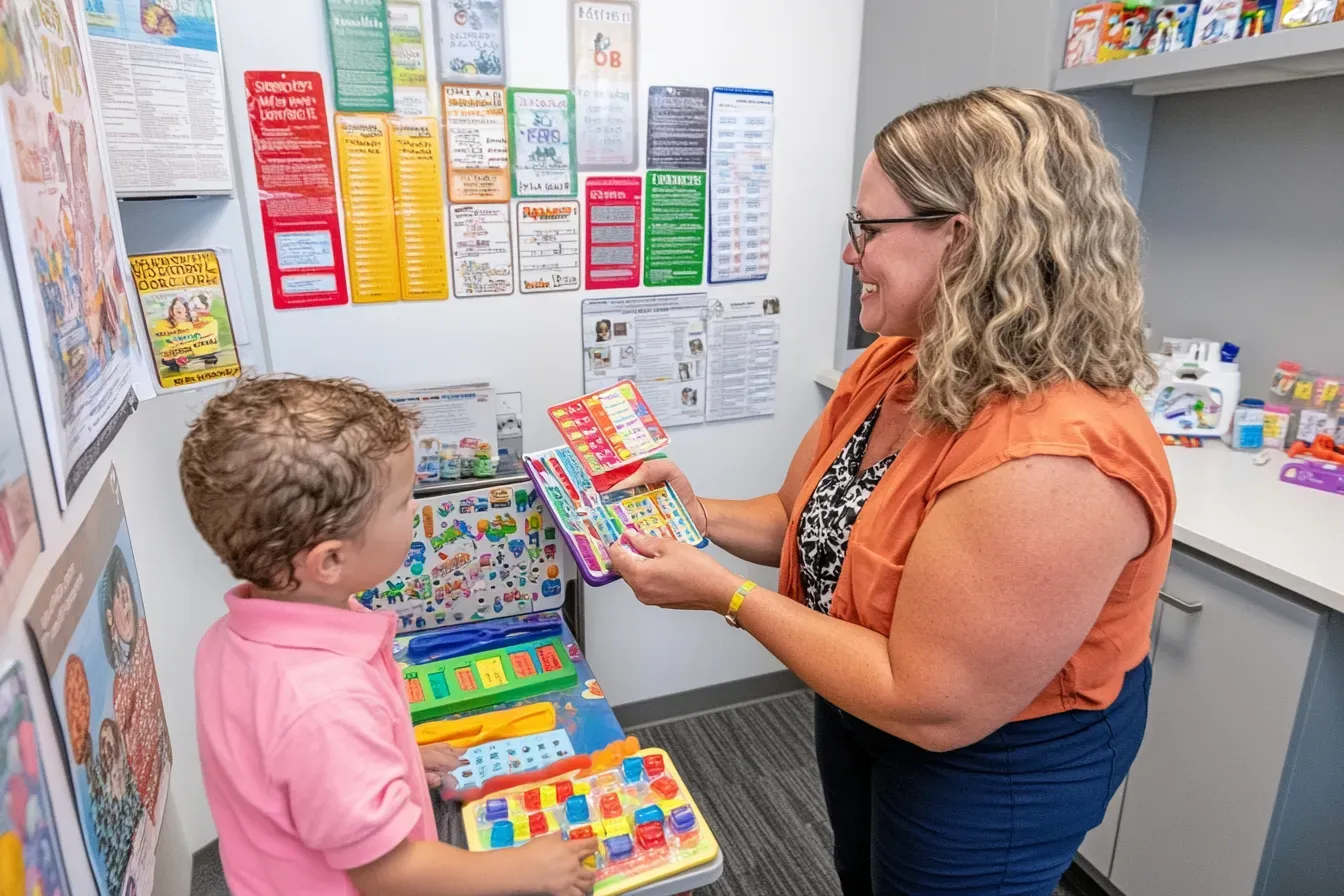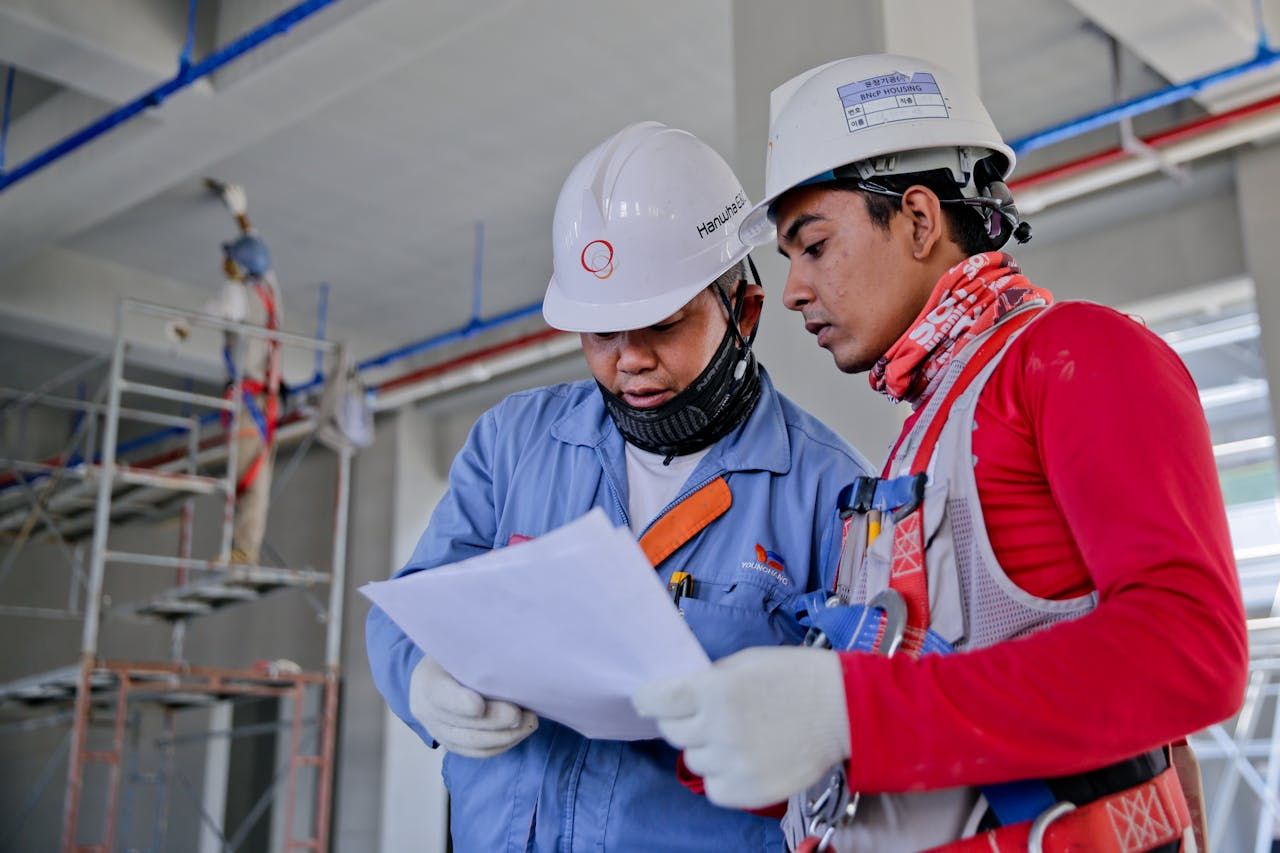Highest & Lowest Average Cost of Private School by State for 2026
A large percentage of parents prefer private schools because they provide a more personalized learning environment for their children than public schools provide (DeAngelis & Erickson, 2017). However, private school tuition in the United States has been on the rise, with a projected 28% increase between 2007/08 and 2020/21 (Hanson, 2021). It’s become a source of tension for today’s students, and many parents feel torn about it.
So, how much does private school cost? The average yearly tuition at one of the 22,440 private K-12 schools in the United States is $12,350 in 2021. This includes the average tuition at a private high school of $16,040 and the average tuition at a private elementary school of $7,630 (Hanson, 2021).
Many students and parents ask, “How much do private schools cost per month?" As such, this guide provides insights into the average private high school tuition and the means of financial aid available to students.
Average Cost of Private School Table of Contents
- General Statistics: Average Cost of Private School
- What are the expenses that go into a private school
- How can private school tuition impact long-term financial planning for families?
- 10 States with the Highest Average Private School Cost for 2026
- Are online education alternatives a viable substitute for private schools?
- 10 States with the Lowest Average Private School Cost
- How Can Advanced Online Credentials Complement Private School Investments?
- What role does accelerated higher education play in maximizing private school investments?
- How does private school education influence opportunities for advanced dual degree programs?
- How does private school tuition compare to other educational investments?
- Does private school education lead to long-term academic and career success?
- What are the trends in private school tuition costs?
- Financial Aid for Private School Tuition
- Can families balance private school investments with affordable higher education options?
- What factors should families consider when selecting a private school?
General Statistics: Average Cost of Private School
According to the National Center for Education Statistics (NCES), 50.7 million pupils attended public schools in 2018. (NCES, 2019b) Private school enrollment fell to 5.7 million in 2017 from six million in 1999. (NCES, 2019a)
Private school fees in USA are determined by academic level, location, religious affiliation, financial help, and a host of other variables.
Nonsectarian schools’ cost, for instance, could reach $28,900 for high school and $20,000 for elementary; that is nearly double the average national tuition for both levels and about five times the average for Catholic elementary private schools and four times that of Catholic secondary private schools.
EducationData.org provides statistics on the average tuition cost of private schools per school type.
Catholic Private Schools
Catholic private schools, or parish schools, typically charge less tuition than other religious or non-religious private schools. So, how much is a private school program for high school students? Annual tuition for elementary students at a Catholic school averages $4,840, compared to $11,240 in secondary level on average. When considering educational expenses, students and parents may also explore cheapest online MSW programs as a cost-effective option for higher education.
Private Day Schools
The majority (91.4%) of private school students attend day schools, which operate similarly to traditional public schools, with students attending classes during the school day and returning home in the evening. The median tuition at private day schools is $16,000: $14,370 for first graders, $15,180 for middle school, and $19,020 for high school.
For private day schools that are members of the National Association of Independent Schools, the median is $27,000. First-graders attending such schools pay $23,330, while high school seniors pay $30,380.
Private Boarding Schools
Students in boarding schools tend to be older and in the secondary level. Day programs are common for younger and elementary-level students.
Of the total private school students, 5.9% are enrolled in boarding schools, while of the total primary school students, less than 0.6% are in boarding schools.
There are only a few hundred boarding schools in the U.S., the majority of which are on the East Coast. Such schools provide room and board. Same as with other private schools, boarding schools charge higher tuition for advanced classes.
The average annual tuition at five-day boarding schools is $33,140, while at a seven-day boarding school, the average is $37,590.
What are the expenses that go into a private school?
Of the $16,050 average private school cost per year, about 76.9% goes to tuition, and 9% goes to technology. Books & supplies and field trips each get $500, while uniforms and athletics get $400 and $300, respectively. Miscellaneous fees amount to $500 (Hanson, 2021). This can include materials for specialized classes, like culinary arts.
Meanwhile, 60.8% of private school tuition goes to faculty, staff, and administrator salaries: a little over half of this proportion goes to teachers’ salaries alone. It also covers employee perks, benefits and payroll taxes (11%), employee professional development (0.6%), and uncategorized and miscellaneous expenses (21.3%). (Hanson, 2021).
Take note, however, that the figures above are a breakdown of typical school costs. There could be additional costs in other private schools. Some would have fees for athletic events, extracurricular activities, social events, and yearbooks. Other schools even require student accounts with the school store for when they need to buy additional uniform materials or school supplies. Finally, though not common, some schools require students to pay for insurance.
How can private school tuition impact long-term financial planning for families?
When considering private school education, it's essential for families to factor tuition costs into their broader financial planning. Beyond the immediate tuition fees, there are long-term financial considerations that may affect savings and retirement plans.
- Saving for multiple children: Families with more than one child may face compounded tuition costs. Planning for these expenses early can help alleviate financial stress in the future.
- Impact on college savings: Private K-12 tuition can reduce a family’s ability to save for higher education. It's crucial to balance private school expenses with future college costs.
- Use of education savings accounts: Families may consider tax-advantaged savings accounts like 529 plans or Coverdell Education Savings Accounts, which can help fund private education while offering tax benefits.
- Potential for loans: In some cases, families may turn to personal loans or school financing options, but this can lead to long-term debt. Understanding the terms and impact of borrowing is important for financial stability.
10 States with the Highest Average Private School Cost for 2026
Of the 50 U.S. states, Connecticut private schools are the most expensive: secondary private school average cost is more than double the national average. Six of the top 10 states with the most expensive private K-12 cost are much higher than the average. The differences between the average cost of high school and elementary are also broadly significant.
Meanwhile, despite being third in the ranking, New Hampshire is home to many of the nation’s most expensive private schools. Maryland’s private schools have relatively higher tuition, but their overall average is lower than nationwide. (Hanson, 2021)
Here are the 10 highest average private school tuition by state. For those exploring educational options, it’s worth considering what to do with a psychology degree, as it can lead to a variety of rewarding career paths.
1. Connecticut
- K-12 average tuition: $23,980
- Elementary school average tuition: $14,350
- Secondary school average tuition: $33,610
2. Vermont
- K-12 average tuition: $21,670
- Elementary school average tuition: $9,600
- Secondary school average tuition: $33,740
3. New Hampshire
- K-12 average tuition: $21,630
- Elementary school average tuition: $11,530
- Secondary school average tuition: $31,720
4. Maine
- K-12 average tuition: $19,680
- Elementary school average tuition: $8,260
- Secondary school average tuition: $31,090
5. Massachusetts
- K-12 average tuition: $17,020
- Elementary school average tuition: $11,580
- Secondary school average tuition: $32,300
6. Rhode Island
- K-12 average tuition: $16,800
- Elementary school average tuition: $7,740
- Secondary school average tuition: $25,850
7. Maryland
- K-12 average tuition: $13,660
- Elementary school average tuition: $10,270
- Secondary school average tuition: $17,040
8. California
- K-12 average tuition: $12,860
- Elementary school average tuition: $11,080
- Secondary school average tuition: $19,830
9. Arizona
- K-12 average tuition: $12,650
- Elementary school average tuition: $7,740
- Secondary school average tuition: $18,590
10. New York
- K-12 average tuition: $11,530
- Elementary school average tuition: $11,250
- Secondary school average tuition: $22,510
Are online education alternatives a viable substitute for private schools?
In today’s evolving educational landscape, many families are examining digital learning options as a potential complement or alternative to traditional private schooling. Virtual education platforms offer structured curricula enhanced by interactive technologies, which may appeal to students needing flexibility in scheduling and learning pace. Parents should evaluate key factors such as accreditation, curriculum rigor, student support services, and the overall cost efficiency when comparing these alternatives to private schools.
Moreover, digital programs often integrate extensive resources and state-of-the-art instructional tools that facilitate personalized learning experiences. For further exploration of such alternatives, consider insights from online schools colleges. Conscientious evaluation of these online options can assist families in determining the most suitable educational pathway based on student needs and long-term financial planning.
10 States with the Lowest Average Private School Cost
Nebraska has the cheapest average cost for private schools in the U.S. However, 70% of private schools in Nebraska are K-5 only, and there are insufficient data available on private high schools in Nebraska to derive much statistical significance. Meanwhile, Omaha has the most number and highest concentration of private schools.
Here are the 10 lowest average private school tuition by state.
1. Kentucky
- K-12 average tuition: $6,530
- Elementary school average tuition: $5,770
- Secondary school average tuition: $7,290
2. Idaho
- K-12 average tuition: $6,250
- Elementary school average tuition: $5,110
- Secondary school average tuition: $7,380
3. Oklahoma
- K-12 average tuition: $5,700
- Elementary school average tuition: $5,020
- Secondary school average tuition: $6,380
4. Arkansas
- K-12 average tuition: $5,470
- Elementary school average tuition: $4,200
- Secondary school average tuition: $6,740
5. Minnesota
- K-12 average tuition: $5,430
- Elementary school average tuition: $4,450
- Secondary school average tuition: $11,470
6. Mississippi
- K-12 average tuition: $5,400
- Elementary school average tuition: $4,630
- Secondary school average tuition: $6,170
7. Indiana
- K-12 average tuition: $5,100
- Elementary school average tuition: $4,780
- Secondary school average tuition: $11,260
8. West Virginia
- K-12 average tuition: $4,760
- Elementary school average tuition: $3,890
- Secondary school average tuition: $5,620
9. Wisconsin
- K-12 average tuition: $3,550
- Elementary school average tuition: $3,280
- Secondary school average tuition: $8,110
10. Nebraska
- K-12 average tuition: $2,830
- Elementary school average tuition: $2,830
- Secondary school average tuition: insufficient data
How Can Advanced Online Credentials Complement Private School Investments?
Investing in a quality private school education can establish a strong academic foundation, setting the stage for lifelong learning and professional development. As families evaluate future opportunities, advanced online credentials offer flexibility to further enhance career prospects without the traditional constraints of on-campus programs. These online programs, including the best graduate certificate programs online, provide a cost-effective means to specialize in emerging fields while complementing the rigorous academic experience gained from private schooling. Emphasizing continuous skill development through targeted online education can optimize the long-term impact of early educational investments on career advancement.
How does private school education influence opportunities for advanced dual degree programs?
Private school education is often associated with rigorous academic standards and a comprehensive support system that cultivates critical thinking and leadership skills. These attributes can enhance a student’s profile when applying for advanced graduate programs. Alumni may experience improved access to competitive options, including opportunities at universities that offer dual master's degrees, which integrate distinct disciplines for expansive skill development. Furthermore, the personalized mentoring and strong academic advising prevalent in private schools can play a significant role in preparing students for the demanding application processes associated with these dual degree opportunities.
What role does accelerated higher education play in maximizing private school investments?
A targeted private school education can serve as a launchpad for pursuing accelerated higher education pathways that reduce time to degree completion and associated costs. Students who excel in a rigorous, personalized learning environment may be better positioned to enroll in condensed academic programs designed to fast‐track career entry. For example, high-achieving graduates might opt for programs such as the fastest associates degree online, which can offer a cost- and time-efficient route into further qualifications. This strategy not only leverages early academic investments but also supports a proactive approach to career advancement by minimizing overall educational expenses.
How does private school tuition compare to other educational investments?
When evaluating the costs associated with private school tuition, it's helpful to measure these costs against other significant educational investments. For instance, many families eventually face the decision of whether to allocate their available funds to private K-12 education or reserve them for higher education expenses. Planning ahead for both these stages of education is essential for long-term financial strategy.
Consider, for example, the rising popularity of affordable online master’s degrees, which have emerged as a financially savvy option for higher education. These programs allow working professionals to gain advanced credentials without incurring the same level of debt often associated with traditional, on-campus graduate programs. By exploring opportunities like affordable online masters degrees, families can weigh the opportunity costs of private K-12 education against the potential return on investment from an economical graduate program in the future.
The decision to invest in private school should therefore be contextualized within a broader understanding of lifelong education costs, including college and specialized training. Families should thoroughly assess how each educational stage aligns with their financial planning and career aspirations, ensuring resources are allocated to maximize opportunities for their children’s future success.
Does private school education lead to long-term academic and career success?
Research indicates that a private school education may contribute to enhanced academic rigor, stronger college admission profiles, and a robust network of alumni, which can influence career outcomes over time. Long-term benefits are often linked to highly structured curricula, individualized instruction, and access to extracurricular programs that foster leadership and innovation. Additionally, some families complement these advantages by pursuing specialized online credentials—such as 6 month certifications that pay well online—to diversify skill sets and better prepare for evolving job markets.
What are the trends in private school tuition costs?
Private school tuition has steadily risen, influenced by various economic and social factors. Here are some key trends that are shaping the cost of private education:
- Rising tuition costs: Over the past decade, the cost of private school tuition has been increasing. This rise is driven by inflation, increased operational costs, and the demand for high-quality facilities and educational programs.
- Variation by state: The cost of private school education varies significantly depending on location. States with higher living costs, such as Connecticut and New York, tend to have the highest tuition rates, while states like Nebraska have much lower costs. Families should consider these regional differences when planning their budgets.
- Increased financial aid offerings: As tuition rises, more private schools are offering financial aid to help families manage costs. This includes scholarships, grants, and loans, which can make private school education more accessible for families of varying income levels.
- Alternative educational models: Some private schools are offering more flexible, affordable alternatives, such as hybrid models of online and in-person learning, which can lower the overall cost of tuition.
- Long-term financial considerations: The increase in tuition costs has made it more important for families to consider the long-term financial implications. Investing in private school education may impact future financial goals, including college savings or planning for 4 year degrees.
Understanding these trends can help families make more informed decisions about private school education and its potential impact on their financial future.
Financial Aid for Private School Tuition
The average award per scholar receiving financial aid in grants is $11,500, and 28% of students enrolled in private schools receive some form of financial assistance. The average grant award per scholar for student boarders is $24,790. At the same time, $10,000 is the median allocation for the 4.6% of private school students who receive tuition reimbursement due to the employment status of a parent or guardian. (Hanson, 2021)
Forms of Financial Aids
Most private schools offer financial help, whether need-based or merit-based. However, each school has standards for who gets financial aid, what sort of aid, and how much each family gets. (NAIS, 2016)
Grants
Financial assistance may take the form of a grant or a scholarship. Grants, like scholarships, are not repaid; however, they are frequently provided based on financial need rather than merit or performance. To be considered for a grant, parents must provide specific information about their financial condition to demonstrate their financial needs.
Scholarships
A scholarship is awarded based on merit, like academic, artistic, or athletic ability. Additionally, scholarships may be offered based on specific abilities.
K-12 scholarships are usually referred to as voucher schemes. Families are provided with vouchers based on their financial circumstances, and they are often obliged to pay at least 25% of tuition or $500, whichever is higher.
According to Shakeel et al., many private school vouchers programs aim to increase students’ academic performance. In their study “The Participant Effects of Private School Vouchers Across the Globe: A Meta-Analytic and Systematic Review," published in School Effectiveness and School Improvement in 2021, they found that “voucher programs globally tend to positively impact test scores, perhaps particularly in countries where there is more of a private-public gap in school quality," with the impacts being “larger for reading than for math and “for publicly-funded programs relative to privately-funded programs."
As such, vouchers as financial aids ease families’ burdens and help students perform better in school.
Other funding sources
Apart from scholarships and grants, parents may also consider discounts and loans. Some private schools offer discounts to children whose parents serve in the military and for multi-child households. Parents ought to consult with the administrative office of their private school since numerous schools are willing to assist parents by waiving tuition.
Personal loans from private lenders like banks can also be sources of aid. These are, however, repaid, and parents must interact directly with the financing institution.
Parents may also consider tax-advantaged savings plans to put aside funds for their children’s private K12 education. The Coverdell Education Savings Account is a tax-deferred trust account formed by the U.S. government, while a 529 Education Savings Plan is a tax-advantaged savings plan. These two plans have different sets of rules.
Many states also help. More than half the states offer school choice programs that help families pay for private K-12 education. Parents should visit their state’s education department to inquire about available aids.

10 Scholarships for K-12
College is not the only time to avail yourself of student scholarships. Both government and non-government organizations offer scholarships to K-12 students, especially those from low-income families. Here are 10 scholarships (not an exhaustive list) to aid K-12 students.
1. Children’s Scholarship Fund
Many efforts have been undertaken to improve student performance, yet many students continue to underperform, and most of these pupils are poor. According to Children’s Scholarship Fund, 80% of 4th graders from low-income families cannot read proficiently, and they want to change that. Children’s Scholarship Fund gives low-income kids private school scholarships.
To be eligible for this scholarship, students must be at least five years old, entering kindergarten or a higher grade. Grade level standards, on the other hand, may differ by place.
2. Jack Kent Cooke Foundation
Jack Kent Cooke Foundation inspires and supports students who study hard and have financial needs. The Foundation offers various financial aid forms to high school, undergraduate, and graduate students financially and academically.
The Cooke Young Scholars Program is a five-year pre-college scholarship for high-achieving 7th graders. Selection is based on academic ability and achievement, leadership, determination, and annual income.
The Young Scholars Program supports students from 8th grade to senior year. Every school year, the Foundation renews Cooke Young Scholars. Assuming the scholar and family meet program objectives, the scholarship extends through senior year.
3. Step Up for Students
The Florida Tax Credit and Family Empowerment Scholarships help families pay for private school tuition and fees or transportation costs to a public school other than the one allocated to their child.
A family of four earning up to $99,375 annually could qualify for a private school scholarship. The scholarship is based on the student’s location and grade. Also, kindergarten students and those entering the first grade must be five and six years old, respectively, by September 1.
Also eligible for scholarships are siblings of kids receiving the Family Empowerment Scholarship, including those with special needs and dependents of U.S. military personnel, including reservists.
4. North Carolina Special Education Scholarship Grants for Children with Disabilities
The Opportunity Scholarship is designed to help families, who make below a certain amount of income, pay tuition at participating nonpublic schools. It covers tuition and fees and awards up to $8,000 annually. Scholarships are awarded by lottery.
The child must be attending a North Carolina public school or will attend one the Spring semester before the scholarship begins, and the family meets the income requirement to be eligible.
5. Pay It Forward Scholarship
Pay it Forward Scholarships are for K-12 private school students in Georgia. Parents must provide their most current tax return and must reapply every year.
Students residing in Georgia and are in Pre-K, Kindergarten, and 1st-grade are eligible. Those in the 2nd grade and up must have either a prior scholarship, six weeks of public school before private school, or a year of homeschooling before entering private school.

6. Georgia GOAL Scholarship Program
The Georgia GOAL Scholarship Program is provided based on financial needs, not household income. Families must present proof of eligibility when applying for the scholarship at a participating school.
Students must have attended a Georgia secondary or primary public school for at least six weeks before obtaining a scholarship or tuition aid. Exceptions to the six-week attendance requirement include:
- a student who is or would be assigned to a public school, which the Office of Student Achievement deems to be low-performing based on the school attendance zone of their primary residence, or
- a student is the victim of officially documented instances of school-based violence or verbal abuse threatening physical harm
- a student had been enrolled in an official home study program for at least one year before receiving a scholarship or tuition grant
7. A Better Chance
A Better Chance helps academically gifted adolescents of color to access the best middle and high school options. A Better Chance does not grant scholarships per see but helps families through the college preparatory school admissions process, guiding them through financial aid processes and leveraging scholarship funding.
Students in grades 4-9 who identify as persons of color (Asian/Pacific Islander, Latino/Hispanic, Native American, or Multiracial and are citizens, or permanent residents of the U.S. are eligible. Their Math and English skills must be consistently above grade level. They must have a B+ or better academic average, are in the top 10% of their class, engage in extracurricular activities, and show leadership potential.
8. Partners in Excellence Scholarship Program
The Pie Scholarship Program offers partial scholarships to eligible students to bridge the financial gap. PIE awards an average of $2,000 scholarship.
Recipients are those who typically cannot afford a Catholic school, has a reading/math literacy that may not always be at grade level but within a year or two, consistently receive substantial parental/guardian support as evidenced by guardian’s willingness to work with schools, live in Baltimore City.
9. K12 Scholarship Program
K12 Scholarship Program offers two types of scholarshipsWe Stand Together and K12 Private Academy Scholarshipsfor K12 Private Academy students.
We Stand Together Scholarship supports the Black community. To apply, students must be in K-12, identify as Black or African American, have a 2.0 GPA (letter grade C on a 4.0 scale or equivalent), and demonstrate financial need (e.g., qualify for Free and Reduced Lunch). Some of these scholarships are reserved for kids in grades 612.
K12 Private Academy offers up to four tuition-free full-time enrollment scholarships to new or returning ninth-grade students who demonstrate academic potential and family financial need. They must have a grade point average of 3.0 (letter grade B).
10. Empower Illinois
The Tax Credit Scholarship for K-12 students covers 100% of private school tuition up to a limit of $14,491.98, which is the statewide average. Students with particular learning requirements, such as brilliant students, ESL students, or special education students, may be eligible for more significant scholarships worth up to $28,983.96 annually. This program is 100% need-based.
Applicants must be from households whose previous year’s total annual income does not exceed 185% of the federal poverty level. They should be residents of the focus district, had received a scholarship from a scholarship granting organization during the previous school year, or siblings of students currently receiving a scholarship.
Can families balance private school investments with affordable higher education options?
Strategic financial planning across all educational stages is critical. Families should evaluate the cumulative cost of private K-12 education alongside long-term higher education investments. In this context, exploring flexible alternatives—such as an accredited online bachelor's degree—can offer a cost-effective pathway to advanced learning while maintaining quality. This balanced approach allows families to manage expenses more efficiently and adapt their educational investments to evolving career requirements without compromising academic standards.
What factors should families consider when selecting a private school?
When choosing a private school, consider academic rigor, teacher quality and ongoing student support, and the availability of extracurricular and enrichment programs that align with your child’s interests. Evaluate the institution’s class size, technology integration, accreditation, and outcomes such as college matriculation rates and alumni achievements to gauge its overall performance. Additionally, assess the school culture, governance, and community feedback, ensuring that its educational philosophy matches your family’s values. For families planning future academic pathways, reviewing our guide What is the easiest bachelor degree? can further inform long-term educational strategies.
Is a private school worth it?
Some people might say that despite the steep average cost of a private school in the U.S., a private school is better than a public school since its students outperform those from the latter on practically every topic in standardized tests. (NAEP, 2015) It is also true in all subject areas in college entry tests. (NAIS, 2016)
Based on the American school statistics presented thus far, it would appear that private school education is indeed worth it. However, the cost is only one factor in deciding where to send kids. Teachers’ training and development, class sizes, and even personal costs incurred by students when invited by affluent classmates, who commonly dominate private schools, are other considerations to make.
Perhaps the most vital factor in deciding if private schools are worth it is the children themselves—the type of environment in which they learn best, their natural talents and interests, and the type of social environment in which they thrive. Ultimately, whether private schools are worth it depends on whether they can meet parents’ and children’s unique needs.
For those considering education in Florida, it’s also valuable to explore psychology masters programs Florida has to offer to find educational opportunities that align with your career goals.
Key Insights
- Increasing Costs: Private school tuition in the United States has been rising, with a projected 28% increase from 2007/08 to 2020/21. The average yearly tuition in 2021 is $12,350.
- Tuition Breakdown: Tuition varies by school type, with Catholic schools being the least expensive, while nonsectarian schools are the most costly. The average tuition for private high schools is $16,040, and for private elementary schools, it is $7,630.
- Additional Expenses: Beyond tuition, private schools incur costs for technology, books, supplies, uniforms, athletics, and miscellaneous fees, which can significantly add to the total cost.
- State Variations: Tuition costs vary significantly by state, with Connecticut having the highest average tuition at $23,980 and Nebraska the lowest at $2,830.
- Financial Aid: Many private schools offer financial aid, including grants, scholarships, and other funding sources, helping to alleviate the cost burden for families.
- Educational Outcomes: Private school students generally outperform their public school counterparts in standardized tests, which can make the investment in private education appear worthwhile.
- Personalized Learning Environment: Parents often choose private schools for the more personalized learning environment, smaller class sizes, and specialized programs they offer.
FAQ
- How much does private school tuition cost on average in the United States? The average yearly tuition at a private K-12 school in the United States is $12,350. For private high schools, the average tuition is $16,040, while for private elementary schools, it is $7,630.
- What additional expenses should I expect beyond tuition? Additional expenses can include costs for technology, books, supplies, uniforms, athletics, and miscellaneous fees. On average, about 76.9% of the private school cost goes to tuition, while other expenses such as technology, books, and field trips can add up to several hundred dollars each.
- Which state has the highest average private school tuition? Connecticut has the highest average private school tuition, with an average K-12 tuition of $23,980, elementary school tuition of $14,350, and secondary school tuition of $33,610.
- Which state has the lowest average private school tuition? Nebraska has the lowest average private school tuition, with an average K-12 tuition of $2,830. The state has insufficient data for secondary school tuition but has a low overall cost compared to other states.
- What types of financial aid are available for private school tuition? Financial aid for private school tuition can come in the form of grants, scholarships, discounts, loans, and tax-advantaged savings plans. Grants and scholarships are often based on financial need or merit, while discounts may be available for military families or multi-child households.
- How much financial aid can a student receive? The average award per student receiving financial aid is $11,500, with 28% of students enrolled in private schools receiving some form of financial assistance. Boarding students can receive higher amounts, with the average grant for student boarders being $24,790.
- Are private schools worth the cost? The value of private schools depends on various factors, including academic performance, class sizes, teacher quality, and the specific needs and preferences of the student. Private school students generally outperform public school students in standardized tests, but the decision should also consider other personal and financial factors.
- Do private schools offer better academic outcomes than public schools? Private school students tend to outperform public school students in standardized tests across most subjects. However, academic outcomes can also depend on individual school quality, teacher training, and the learning environment.
- Can financial aid cover the full cost of private school tuition? While financial aid can significantly reduce the cost, it may not always cover the full tuition. Families often need to pay a portion of the tuition or additional fees. Some scholarships and grants can cover a substantial part of the costs, especially for low-income families.
- What should parents consider when choosing a private school? Parents should consider factors such as the cost of tuition, availability of financial aid, academic performance, class sizes, teacher quality, and the specific needs and learning style of their child. It is also important to visit schools, talk to administrators and teachers, and review the school's curriculum and extracurricular offerings.
References
- DeAngelis, C.A., & Erickson, H. (2017). What Leads to Successful School Choice Programs? A Review of the Theories and Evidence. LSN: Education Law: Primary & Secondary Education (Topic). https://scholarworks.uark.edu/cgi/viewcontent.cgi?article=1002&context=edrepub
- Hanson, M. (2021, October 12). Average Cost of Private School. EducationData.org. https://educationdata.org/average-cost-of-private-school
- National Assessment of Educational Progress. (2015). NAEP Dashboards Schools. Nationsreportcard.gov. https://www.nationsreportcard.gov/dashboards/schools_dashboard.aspx
- National Association of Independent Schools. (2016). NAIS Independent Schools and the SAT. Nais.org. https://www.nais.org/magazine/independent-school/spring-2016/independent-schools-and-the-sat/
- National Center for Education Statistics. (2019a). COE Private School Enrollment. Ed.gov. https://nces.ed.gov/programs/coe/indicator/cgc
- National Center for Education Statistics. (2019b). COE Public School Enrollment. Ed.gov. https://nces.ed.gov/programs/coe/indicator/cga
- Shakeel, M. D., Anderson, K., & Wolf, P. J. (2021). The Participant Effects of Private School Vouchers Across the Globe: A Meta-Analytic and Systematic Review. School Effectiveness and School Improvement. Retrieved from https://www.tandfonline.com/doi/abs/10.1080/09243453.2021.1906283?journalCode=nses20


































